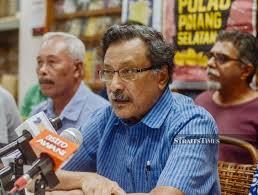Press release by the President of the Consumers Association of Penang (CAP), Mohideen Abdul Kader
The Consumers Association of Penang (CAP) calls upon the authorities to conduct thorough
investigations on all chicken farms in the country for salmonella contamination.
This should be done in light of the second recall of eggs by the Singapore Food Agency
(SFA) which had detected the presence of Salmonella enteritidis in eggs imported from
Malaysia, this time from a farm located in Perak.
This comes days after the same bacteria was found in eggs from another Malaysian farm.
Dato Sri Alexander Nanta Linggi Minister of Domestic Trade and Consumer Affairs
(KPDNHEP) responded to the issue that its ministry will be implementing stricter monitoring
of egg supplies at the production and distribution level.
He asserted that this is done to ensure that the situation would not affect the egg supplies in local markets.
As much as it is reassuring to hear that the supply of eggs to consumers will be looked into,
Malaysian consumers too deserve eggs which are free from contamination with pathogenic
bacteria such as Salmonella enteritidis(SE).
The poultry industry is an important source to supply meat protein to Malaysians. The total
value of sales value for chicken eggs and chicken meat ex-farm are believed to exceed RM10
billion annually.
As an average, the consumption of chicken meat is at 45kg and chicken eggs 370 eggs per
capita (person) annually. This translates to a daily demand of approximately 30 million eggs a
day.
The poultry industry is the most successful Malaysian livestock segment and has the highest
output value, with daily production averaging around 2 million birds (Asian Poultry
Magazine, 2020).
The Malaysian production of 840 million chicken per year and 10 billion eggs per year is an
industrial process that is highly automated. This means that the process is vulnerable to
breakdowns that could affect the safety of chicken produce.
A broiler farm for chicken meat usually consists of broiler sheds, each accommodating up to
25,000 birds which uses automated equipment for feeding lines, drinking lines, ventilation,
temperature control, feed storage, feed distribution, lights and control system.
Laying hens are usually raised in cages. Each farm consists of multiple sheds, and each shed
usually accommodates between 20,000 and 60,000 birds.
The automated equipment are: cages, feeding lines, drinking lines, egg collection, lights, manure transport, feed storage and distribution, control system, ventilation and temperature control.
The industrial production of chicken is inhumane as the chickens are not reared naturally and
deprived of their needs for space by overcrowded and dirty conditions.
Given the above scenario for poultry production in Malaysia, we can imagine the problems
caused to poultry production in case of disruptions either to the equipment or power supplies.
In a statement on Sunday (Mar 14), Malaysian Department of Veterinary Services (DVS) said it is looking into egg production processes, vaccination records and the farm’s disease surveillance programme to try and trace the source of the SE contamination.
To date we have not heard of eggs in the Malaysian market being tested for SE or recalled
due to the contamination. We only hear from importing countries.
The affected farms that produced the contaminated eggs are giant players in the industry
which cater for the export market, what about the numerous other farms that cater for the
local market?
Our authorities are saying that SE can be destroyed by heat and eggs are safe to consume if
they are cooked thoroughly. If this has been the case why are the eggs from the affected farms
from Malaysia being rejected by the Singaporean authorities.
In view of the latest recall, CAP reiterates its calls to the authorities to:
– Investigate all poultry farms in the country to ensure that they comply with our food
safety regulations.
– Look into how chickens are reared which could have contributed to the salmonella
contamination.
– Set up a committee to investigate the weaknesses of our monitoring system with regards
to food safety.
– The recurring reports on unsafe Malaysian food products by overseas authorities clearly show
that our food safety monitoring is inadequate.


